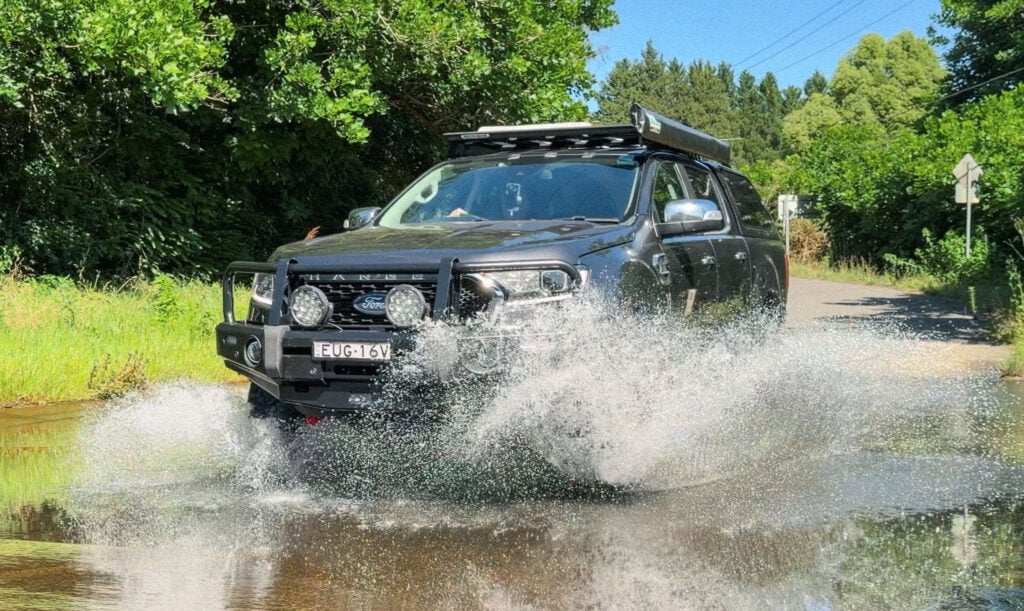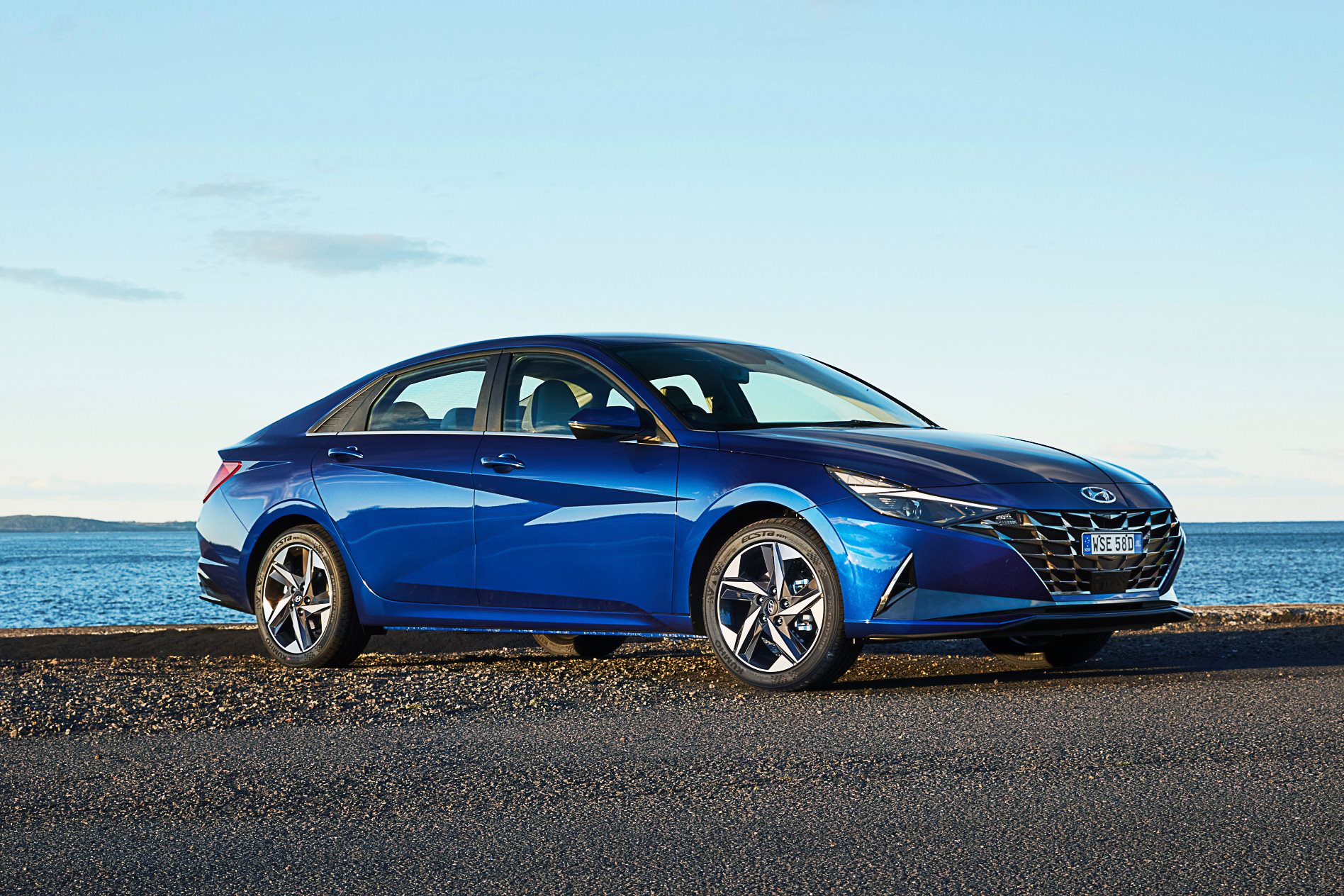
What is the Hyundai i30 Sedan?
If you like your small cars with a boot, then you’ll love the new Hyundai i30 Sedan.
Obviously, it’s closely related to the Hyundai i30 hatchback, but – like its rivals from Mazda and Toyota – the two aren’t identical.
The small four-door, five-seat sedan is the replacement for the old Hyundai Elantra, and the company is pitching it at a broad range of buyers who are looking for something a little bit upmarket but is still keenly priced.
Price and value
The Hyundai i30 Sedan will take on the Toyota Corolla sedan and Mazda 3 sedan, as well as sibling rival Kia and its Cerato sedan.
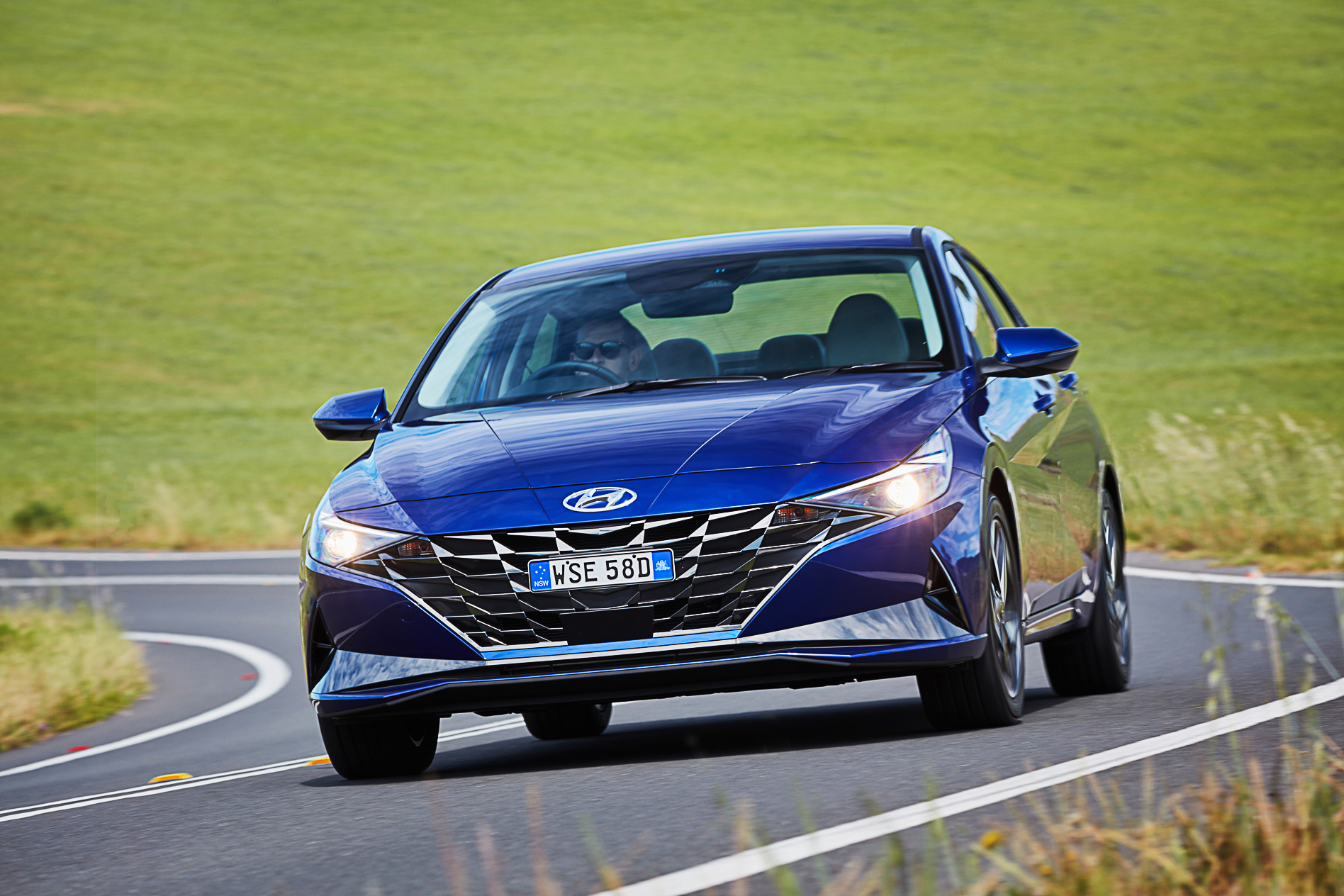
It’s priced from $24,790 plus on-road costs for the base-model Active equipped with a 2.0-litre naturally aspirated petrol engine and six-speed manual.
Most people will pay $2000 more for a six-speed automatic-equipped i30 Sedan Active, while the auto-only Elite will cost $30,790.
Stepping up into the i30 Sedan N-Line costs $30,290 in manual form and $32,290 with a seven-speed dual-clutch transmission, while the top-spec N-Line Premium is DCT-only and will cost $37,290 plus on-roads. All i30 Sedans are front-wheel-drive.
Opting for the Elite as tested here gets you additional safety aids over the entry-level Active, including blind-spot collision avoidance, rear cross-traffic and rear parking collision avoidance, a 10.25-inch screen to match the digital dash and automatic wipers, along with a Bose stereo, push-button start and keyless entry.
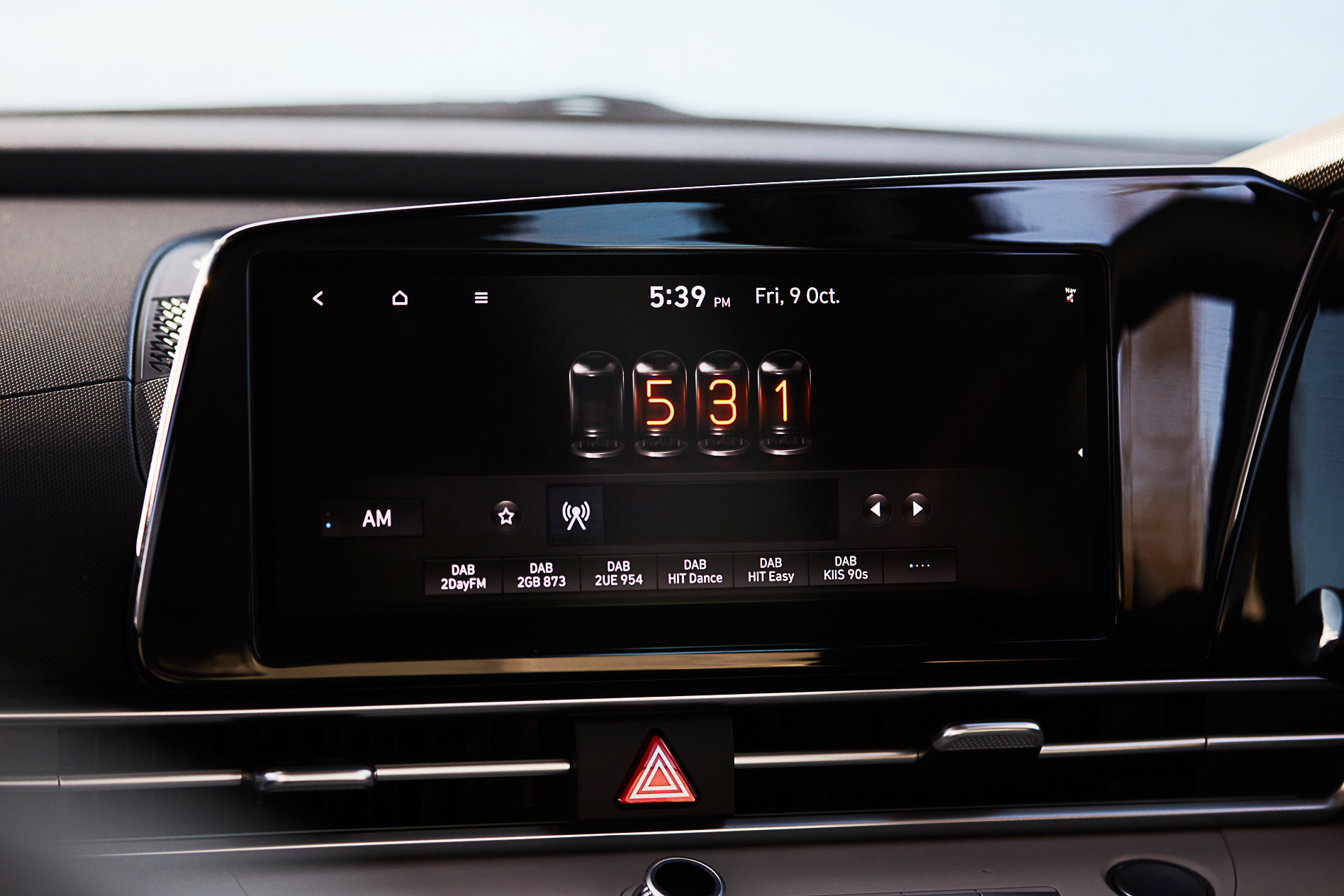
This sits in with the automatic headlights, Apple CarPlay/ Android Auto connectivity, AEB, lane-keep assist and small but important features like rear-seat occupant warning, which is activated by detecting whether the rear doors were opened at the start of the trip.
Interestingly, the cheapest Active is the only car in the i30 Sedan range to currently offer wireless Apple CarPlay, thanks to an age difference in the technologies between the smaller and larger screens.
Hyundai tells us that wireless CarPlay will come on stream in a future update. The bigger multimedia screen also features Hyundai’s newest widescreen sat-nav tech.
The Elite uses an improved version of Hyundai’s 2.0-litre non-turbo petrol engine, called the SmartStream G2.0, which makes 117kW and 191Nm.
Living with the Hyundai i30 Sedan
On a wet and gloomy Sydney day, we ran the i30 sedan over a variety of terrain that you’d expect to encounter in a typical lifetime of a family’s second car, a young couple’s first new set of wheels or even an empty-nester looking to downsize. This included inner-city driving, a rough country back road loop and highway touring.
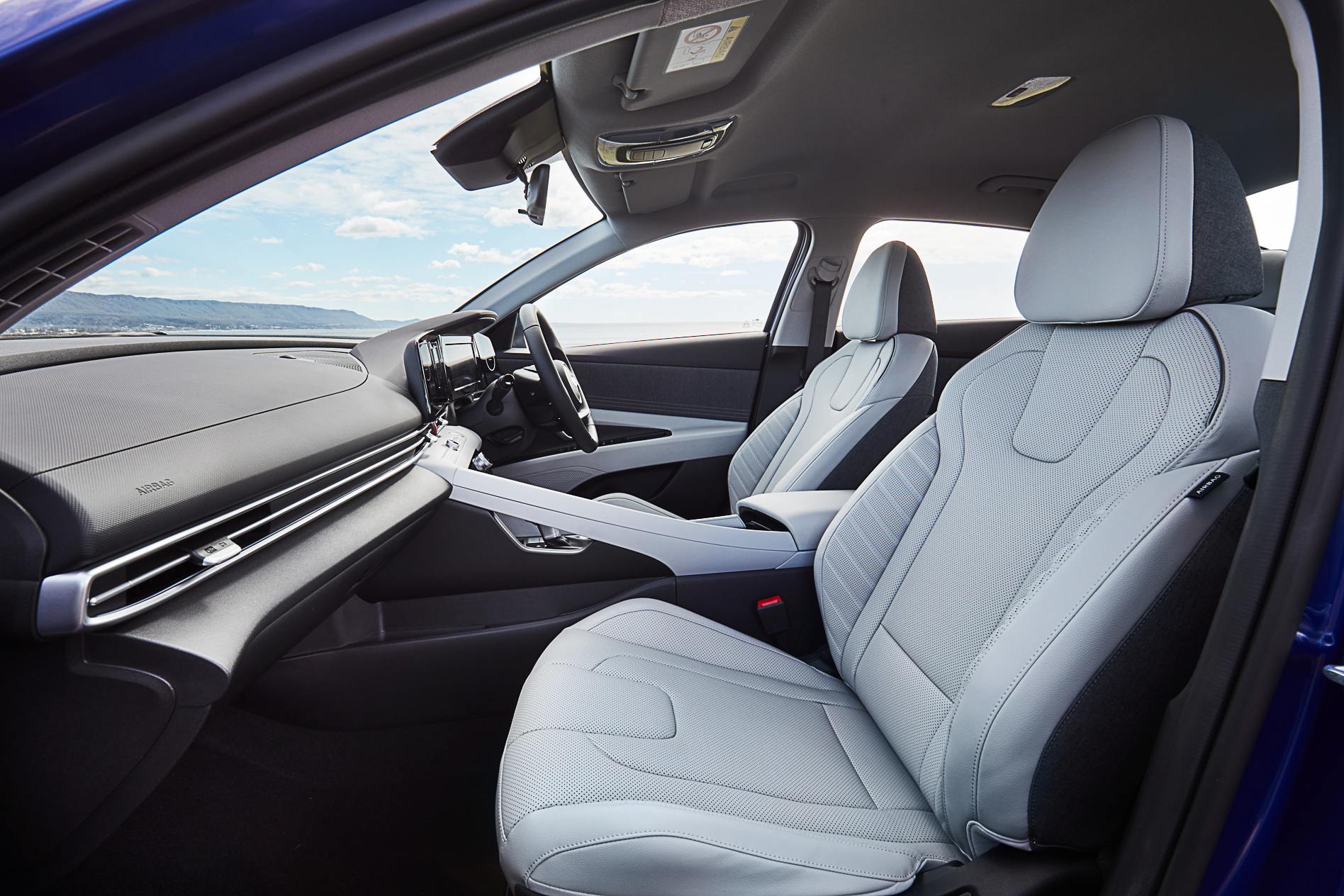
Based on a similar but newer version of the platform under the i30 hatch, the sedan is a different proposition to the five-door version in a number of ways, not least in its more ‘luxury on a budget’ vibe.
Hyundai itself says that the sedan is not a sub-$20,000 kind of car, opting instead to stuff it full of tech and drape it with a contemporary design that sets it apart not just from the pack, but from its hatchback sibling.
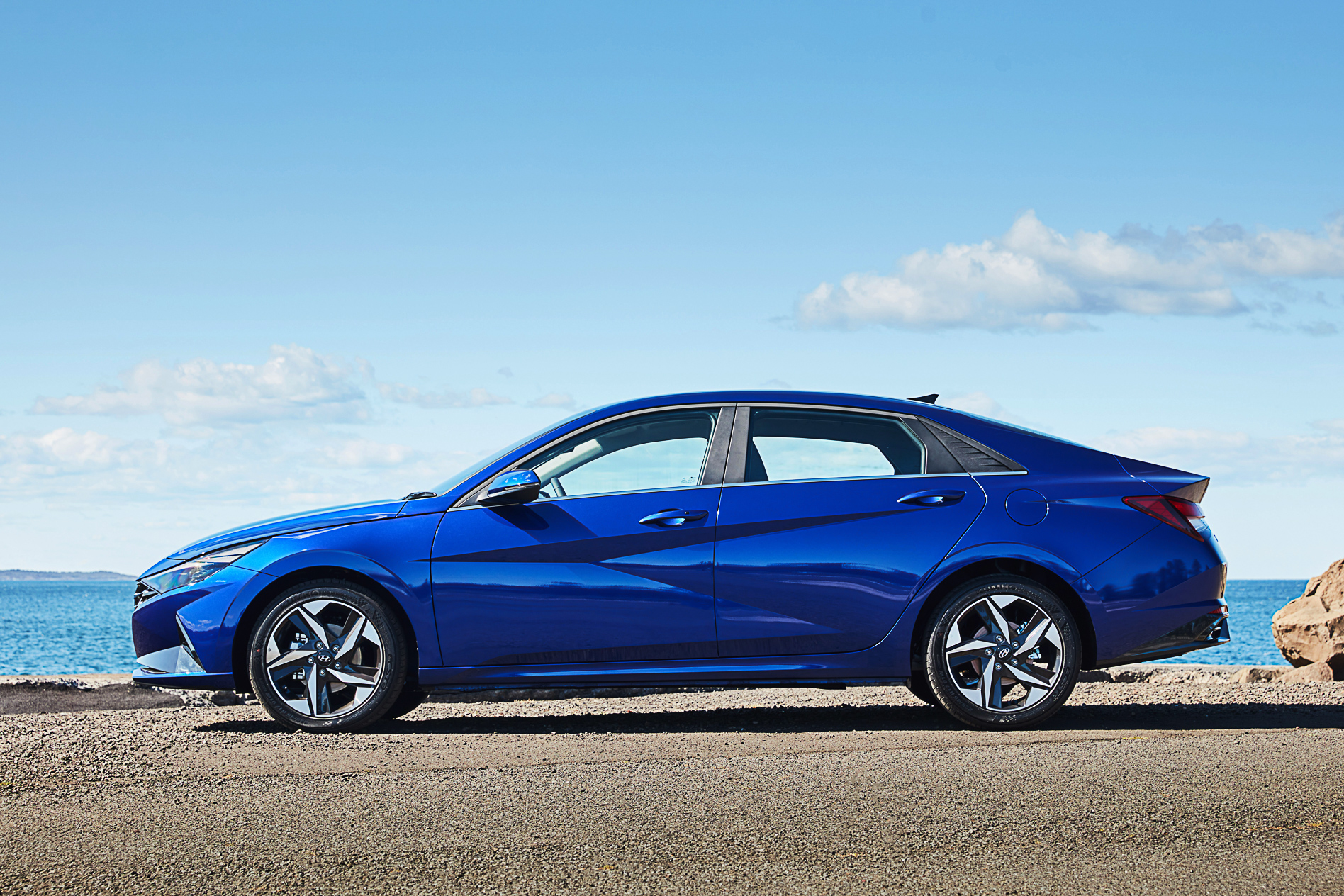
Inside, the $4000 step up from base Active to the Elite is, in our view, a worthy leap.
There’s a marked increase in the visual presentation, not least because of the very cool twin-screen layout but because of the way the design favours the driver with a category-leading cockpit design that wouldn’t look out of place in something that costs $14,000 more.
Its front seats are comfortable and are slung low in the car, while button arrays are minimised in favour of the 10.25in multimedia screen running the show.
There are USB ports and an inductive phone charging pad up front, but needing to plug in a cable to activate Apple CarPlay renders the pad redundant for iPhones and Android phones.
Rear seaters aren’t forgotten, with reasonable room for two adults in the back. Head room is decent enough, as is knee room. Three would be a compromise, though, thanks to the large transmission tunnel.
There are two ISOFIX baby seat mounts and rear vents but, strangely for a charging point-mad Hyundai, there are no USB points in the back.
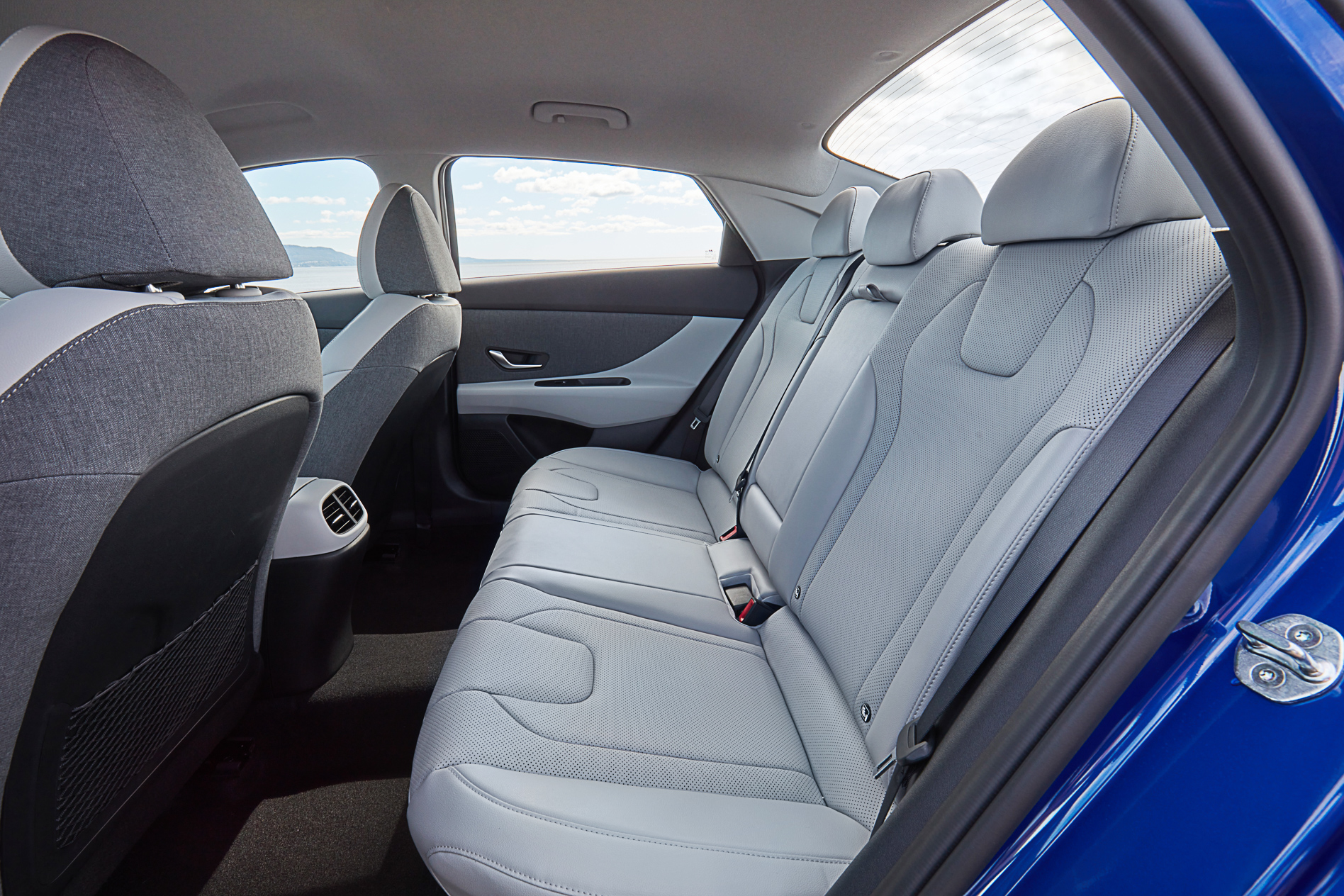
The boot floor of the Hyundai i30 Sedan hides a full-size spare wheel rather than a space saver, which is a great addition. The boot itself measures 471 litres in size; just one more than the Corolla sedan and 25 more than the Mazda 3.
Driving the Hyundai i30 Sedan
Hyundai takes great pains to tune most of its cars for Australian conditions, after copping an absolute pasting about a decade ago for the ride and handling of one its cars – dispatched to Australia in its overseas form – in local press.
Now, ride, handling and steering are all tested locally, and changes made at a factory level to improve things where necessary.
The i30 Sedan has really benefitted from this program, with a terrific balance struck between providing a comfortable ride and having a bit of character about it.
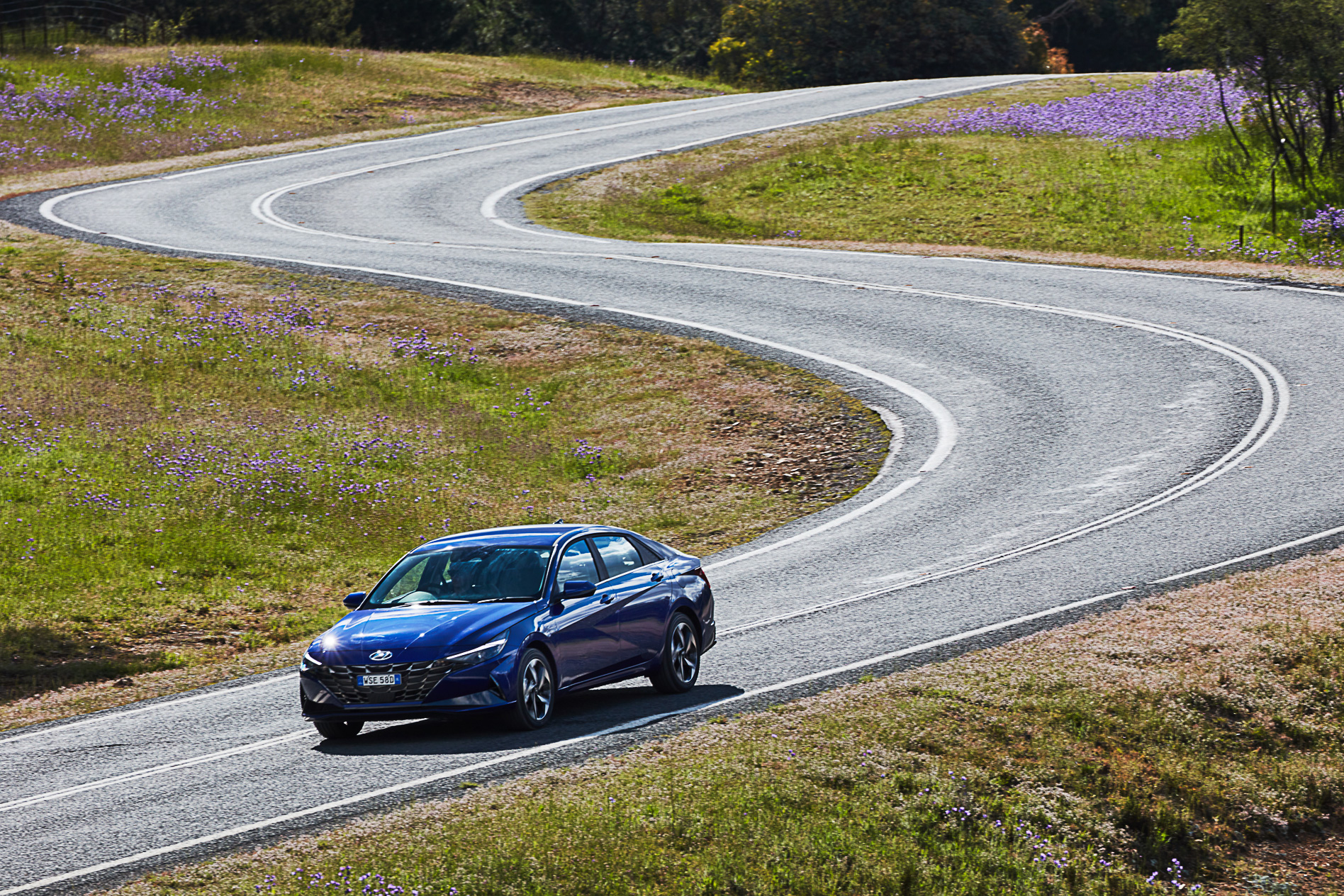
It steers naturally and easily, and small imperfections are smoothed over with the aplomb of something larger and more expensive.
There have been moderate improvements to the 2.0-litre non-turbo four-cylinder, too, which still lacks character but does its job adequately.
It matches well with the Elite’s six-speed traditional automatic, sending power to the front wheels in a fuss-free way. There are no paddles to manually override it, but honestly, you don’t need them here.
The i30 sedan is impressively quiet, as well; road noise can be a bugbear in smaller cars but Hyundai has managed to quell tyre roar and wind noise quite well.
Safety
Now this is an interesting one. Hyundai has rammed the Elite, and all of the i30 Sedans, to the gunwales with safety tech, from low- and high-speed AEB with pedestrian and cyclist detection to rear-cross traffic alert and even rear-seat occupant warning.
However, because the i30 Sedan hasn’t been crashed-tested by Euro NCAP, Hyundai has been unable to apply that test data to a potential ANCAP score.
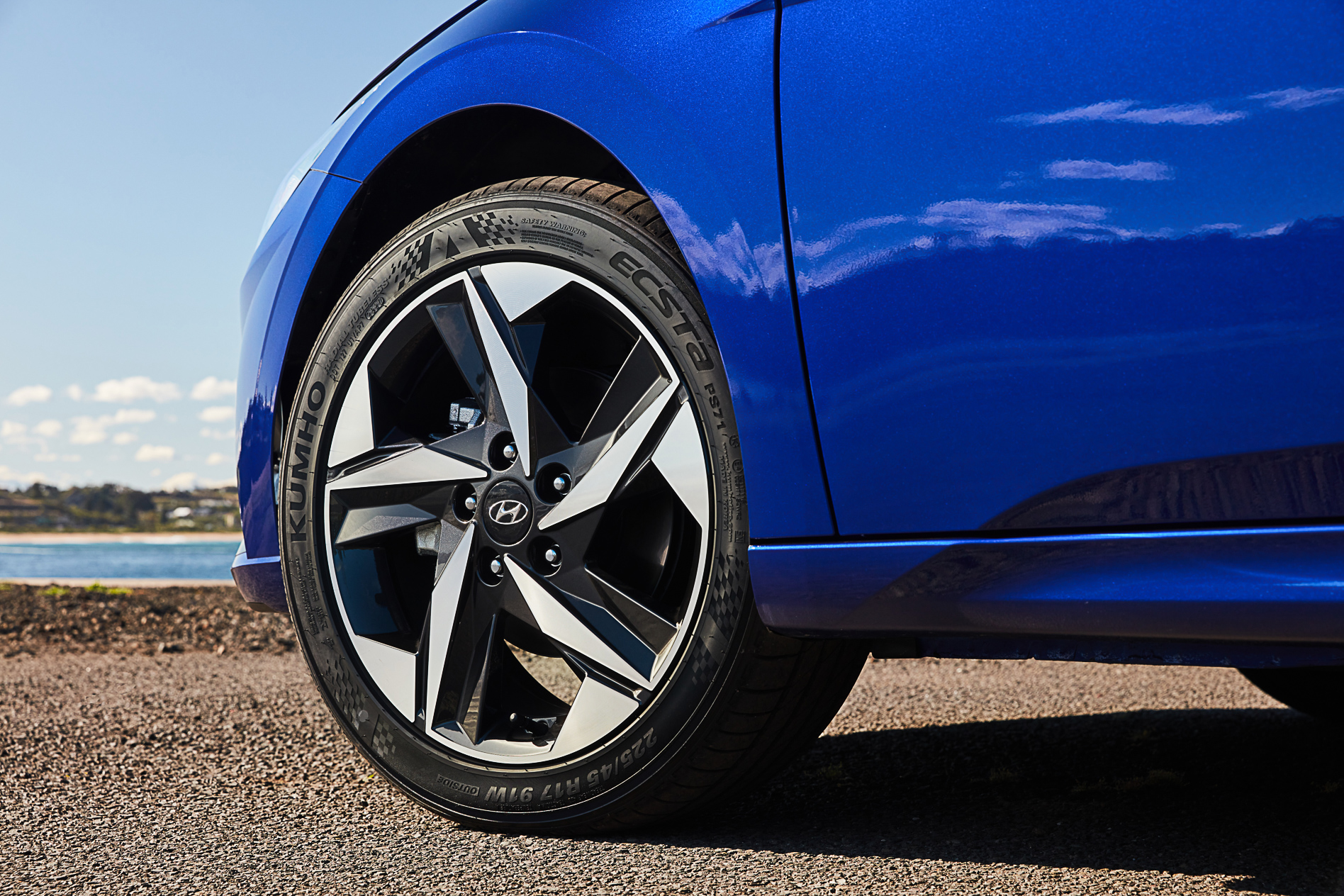
It can submit the car for a test, but because of the change to testing in 2020, it’s unlikely that the i30 Sedan would receive a five-star rating.
However, with six airbags, low- and high-speed AEB, lane-keep assist, adaptive cruise control, rear parking camera and rear sensors and automatic headlights, the i30 Sedan is undoubtedly well equipped for safety.
How much does it cost to run the Hyundai i30 Sedan?
Hyundai offers a five-year/unlimited-kilometre warranty on the i30 Sedan, with recommended service intervals of 12 months or 15,000km, whichever comes first.
A comprehensive fixed-price service program known as the Lifetime Service Plan provides fixed-price servicing on the life of the i30 Sedan (defined as 34 years), which can be transferred to a new owner.
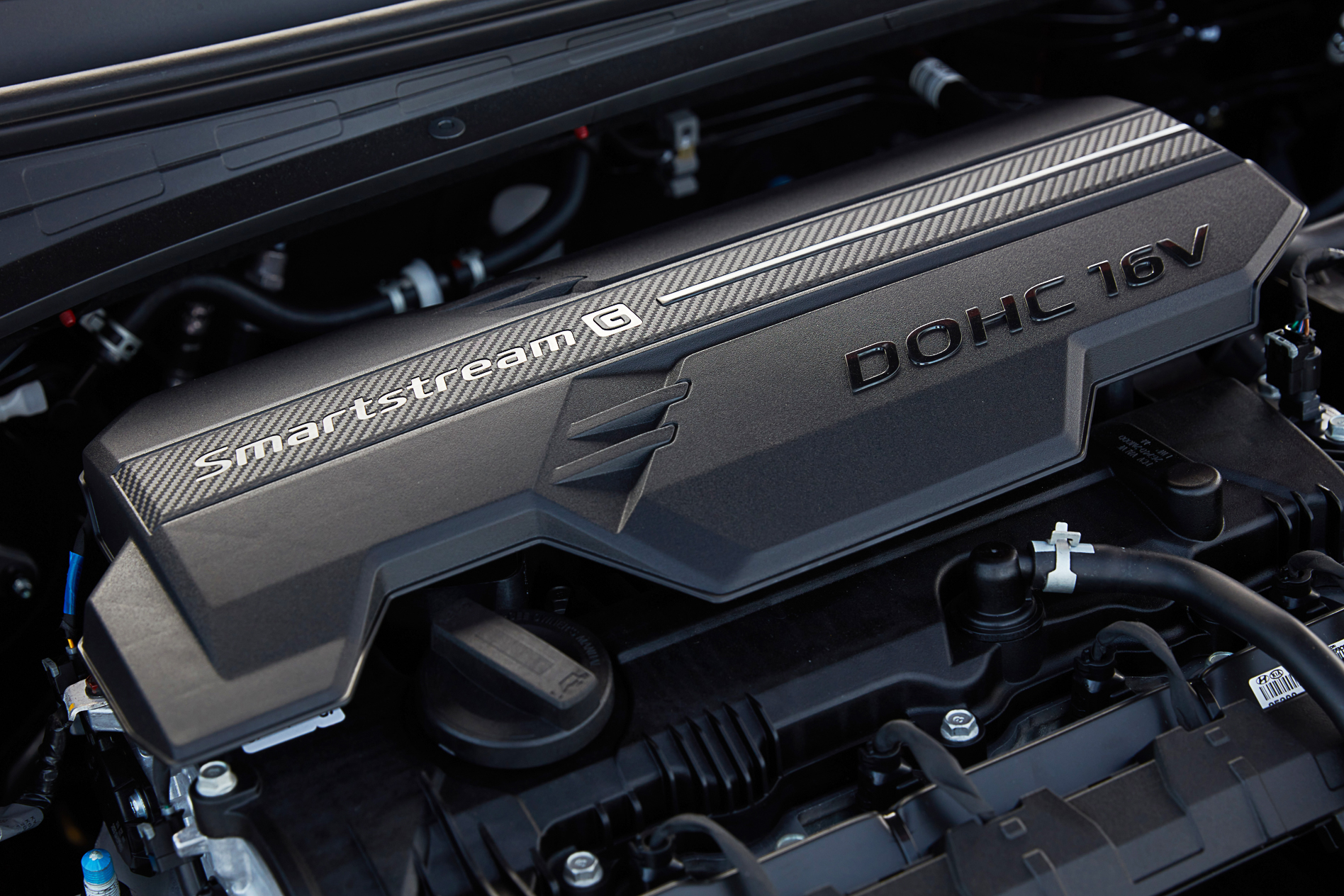
The first five years of servicing for the 2.0-litre equipped i30 Sedan Elite will be approximately $280 per service.
With a claimed combined fuel economy figure of 7.0 litres per 100km, the i30 Sedan should travel about 670km on one 47-litre tank of fuel, and cost about $60-65 to fill up.
It can handle the cheapest 91RON, too, according to Hyundai.
Verdict
Hyundai has done a good job of separating the i30 Sedan from the hatchback in both its looks and its perceived feel.
The out-there exterior styling might not be to everyone’s tastes, though.
If it’s a little bit of affordable luxury you’re after in a small, easy-to-drive, comfortable sedan, the Hyundai i30 Sedan is well worth a look.
Rating 4/5
What you will like
Lots of standard technology, composed and comfortable to drive
What you won’t
Rock star looks
2020 Hyundai i30 Sedan Specifications
Price From $30,790
Engine/Transmission 2.0-litre four-cylinder, six-speed auto
Fuel consumption/CO2/Tank size 7.0L/100km/159g/km/47L
Safety not rated
Seats 5
Warranty / Service Interval 5 yrs/unlimited km, 12 months/30,000km
Spare Wheel (type) Full size
Dimensions (l/w/h) 4676mm/1826mm/1414mm
Weight 1300kg (est)



